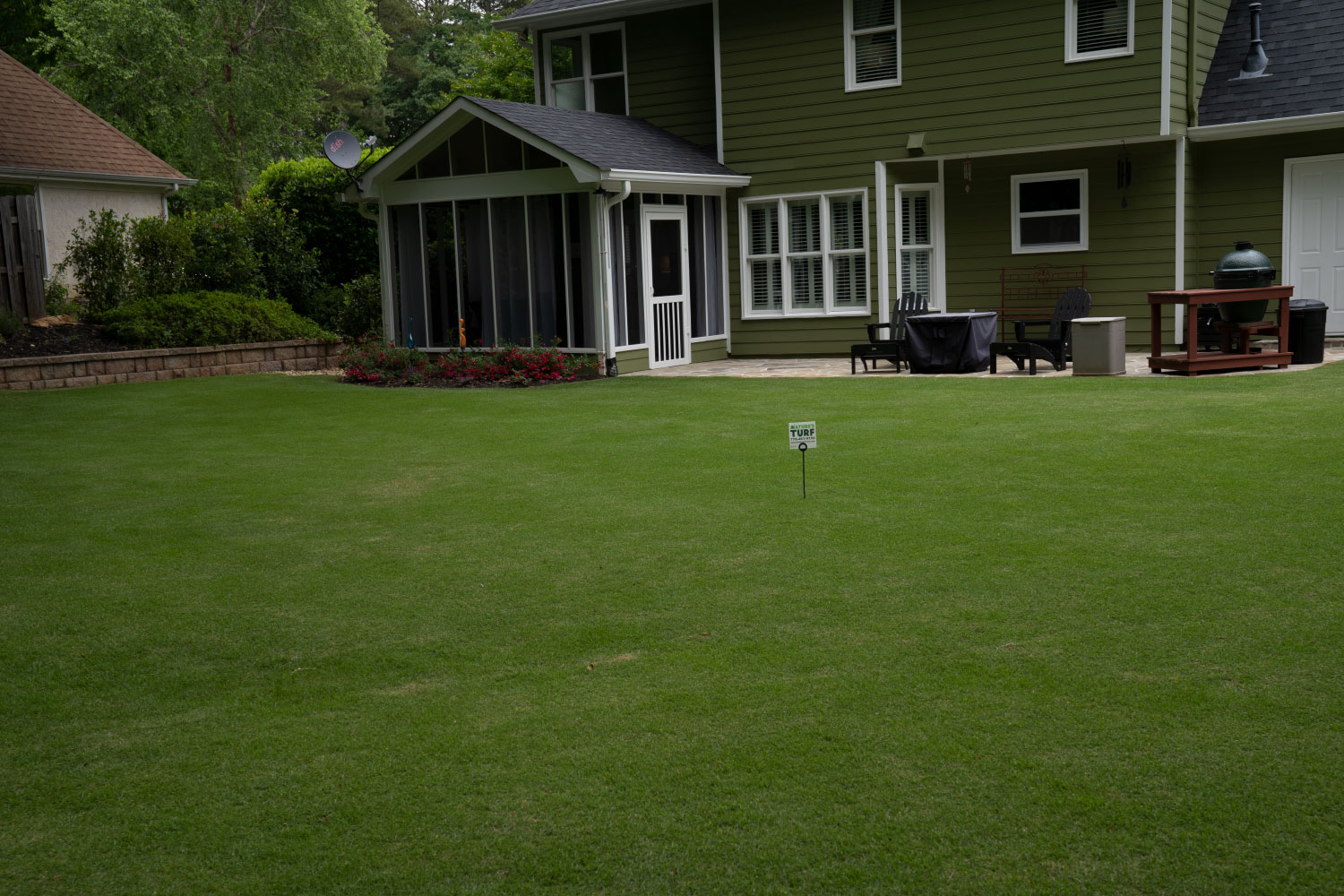Scalping is a term often used to describe injury in turfgrass. During the growing season, scalping occurs when too much time has passed between mowings, and it results in the removal of too much plant material at one time. When your lawn is green, this could result in discoloration, thinness, and even bare areas, but there is one time of year where scalping your bermuda grass lawn can be beneficial.
What Is Spring Scalping?
Spring scalping is the intentional removal of stem and leaf material from your bermuda grass lawn. The most common way this is accomplished is with a lawn mower set to its lowest setting and the use of its bagging attachment. While letting grass leaf clippings fall during the season can be a beneficial source of nutrition, the stems cut during a scalp are much slower to break down and contribute to a layer called thatch. An appropriate amount of thatch is normal, but excessive thatch can create a number of issues that compromise the health of your lawn. For that reason, bagging during a spring scalp is imperative.
Why Spring Scalping Can Be Beneficial for Your Bermuda Grass
Intentional scalping is performed to reset your lawn’s height and remove last year’s leaves and stems. If done appropriately, it can aid in rebounding from dormancy and setting your mowing season off on the correct path.
Winter means dormancy for bermuda grass lawns. As discussed in this previous blog, dormancy can be described as a hibernation for warm-season turfs. Through late summer and fall, the turf stores energy in its tuberous root systems and takes a good nap during the winter when temperatures are cold and days are short. Once ideal conditions are met in spring, bermuda grass will break this dormancy.
As spring arrives, so does new growth from bermuda grass. This new growth makes its appearance as new shoots emerging from the root system. Scalping to remove old material can aid your grass in an earlier, faster, and more successful green up. Timing, however, is everything.
When Should You Scalp Your Bermuda Grass?
If you decide to scalp your bermuda grass, there is an important window of time in which it should be done. Much like Goldilocks likes her porridge at a certain temperature, there is a time to scalp that is “just right.” This time is normally late winter or early spring, after the last frost, and as soil temperatures approach 60 degrees.
The dormant canopy removed by the scalping process is your friend during the winter months. Removing it too early can be problematic. A nice, dense lawn competes with weeds, shading the soil’s surface and aiding pre-emergent weed control products in resisting the emergence of weeds. Even when dormant, the shade of a dense, healthy lawn provides similar help. Scalping too early invites weeds and may also mean new bermuda too early.
Newly emerged bermuda grass shoots and leaves can be very sensitive to freezing temperatures. One effect of scalping is warmer soil temperatures earlier. This may result in fresh, new bermuda shoots earlier. If too early, however, a hard freeze can unintentionally damage them. This is both harmful to the new shoots and also an unintentional hit to the stored nutrition used to produce those new shoots.
Important Takeaways:
- Spring scalping a bermuda grass lawn is the intentional removal of last season’s stems and leaves, typically with the use of a lawn mower and bag.
- Bagging is imperative. Bagging carries away materials that will contribute to an unhealthy amount of thatch if not removed.
- Scalping in the fall or winter is not advised. That dormant canopy is an important part of inhibiting weed germination when combined with pre-emergent weed control products.
- Spring scalping is usually best done late winter or early spring, after the last frost, and as green tissues begin to emerge in your bermuda lawn.








